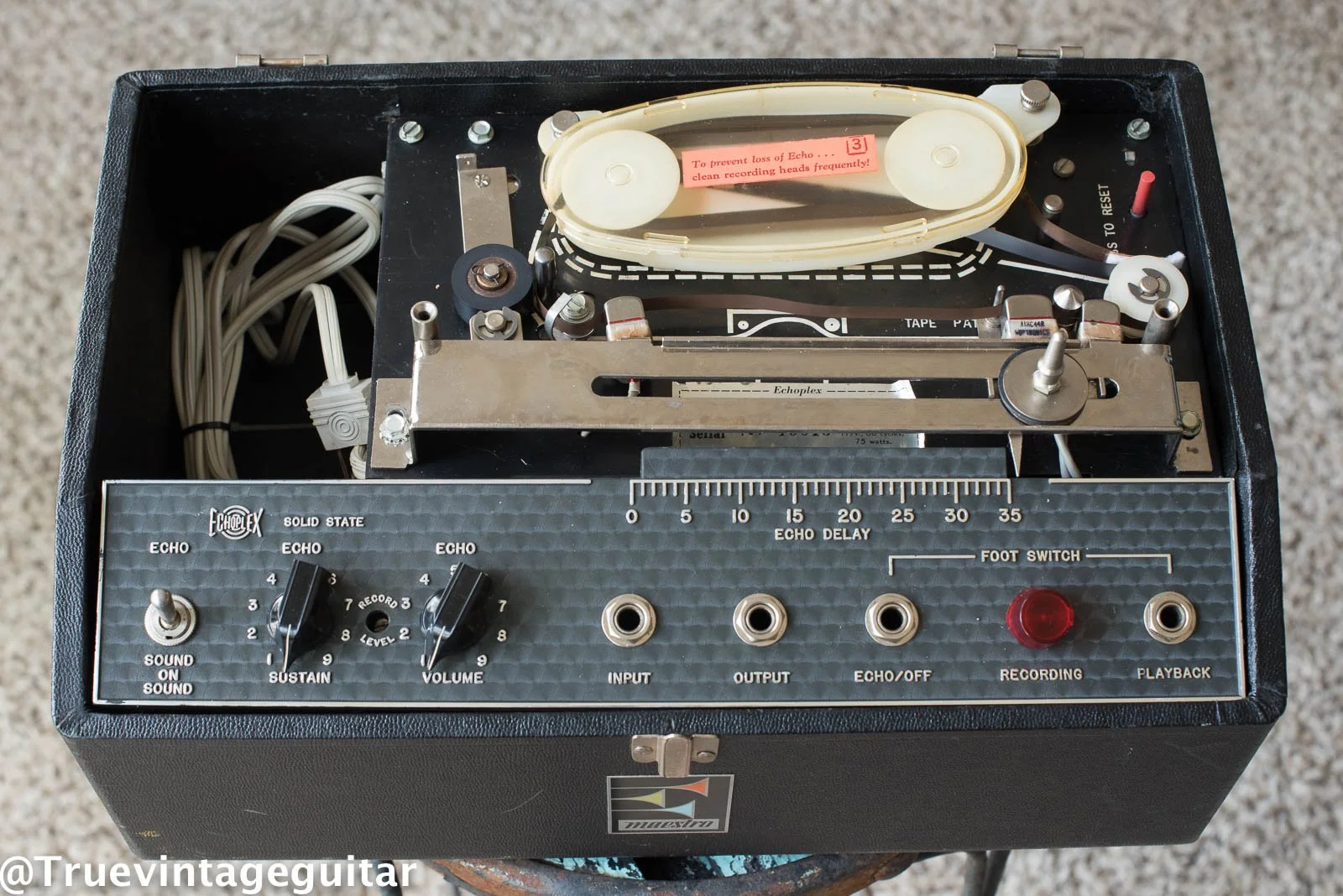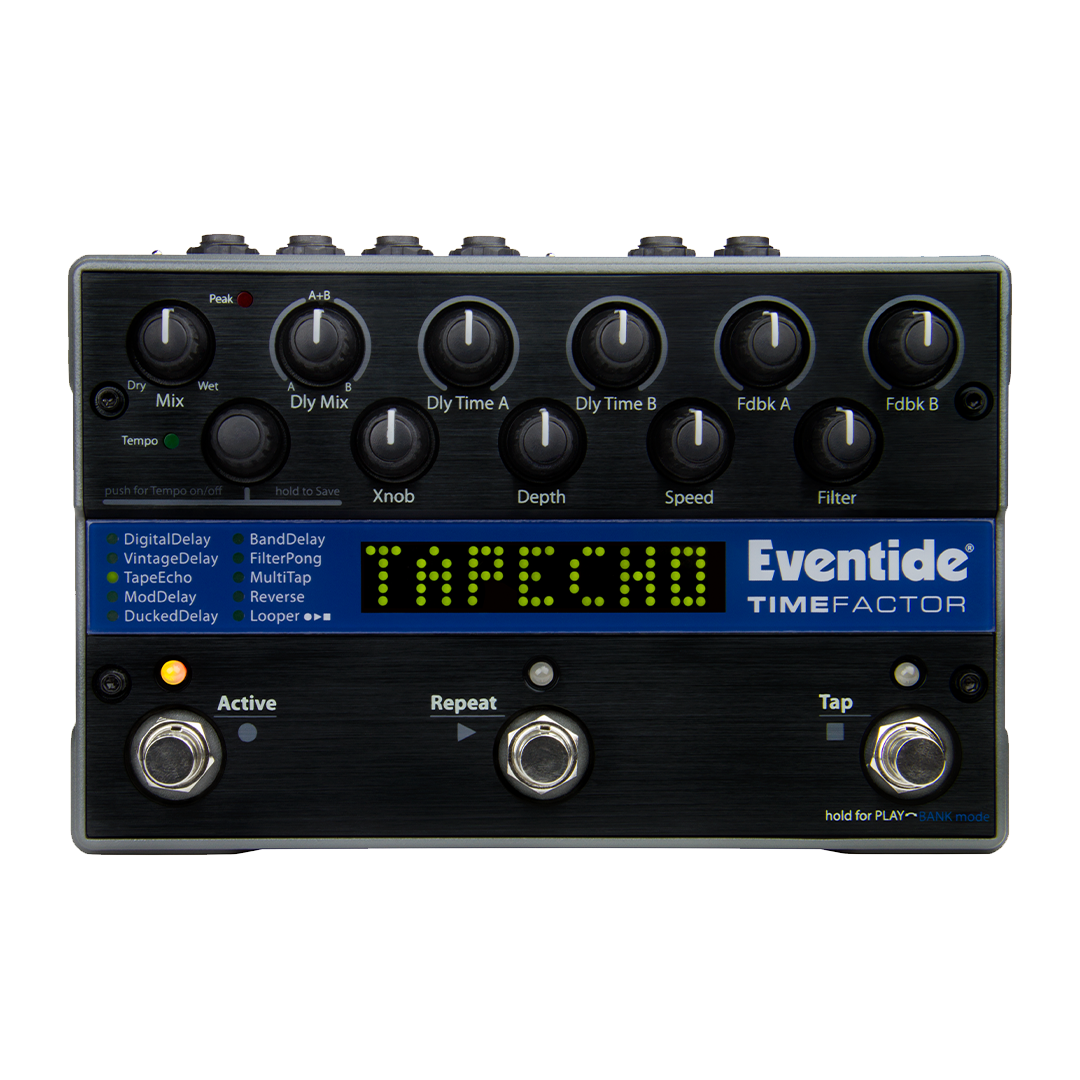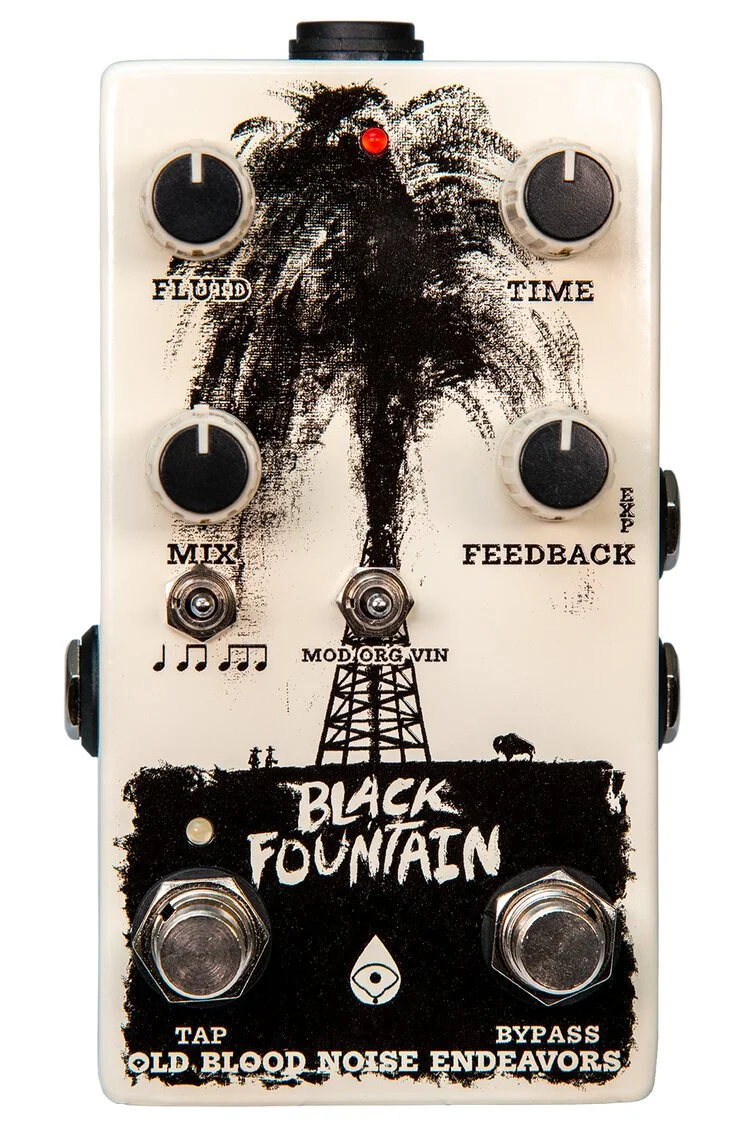Let’s Delay That…
Hey neighbours, welcome to That Guitar Lover. In this article, I want to talk about the type of pedals that I am personally most enthralled with, and you can gather from the title, that I am talking about delays.
Generally a delay pedal holds a copy of the signal somewhere, releasing it after a period of time. The number of releases can be adjusted and one can most often manipulate the tone of the repeated signal. It’s hard to talk about a delay without using the word delay.
Delays have been around a very long time. The guitarist Les Paul was also a major recording innovator and spent a lot of time working on ways to create delay effects in the recording process. Reverbs are sometimes seen as a type of delay, and modern reverbs have delay functions, but a reverb is a different critter so I will stick to delays here.
Mechanical Delays
The Original Drum Delay - The Binson Echorec
Delays started as mechanical entities. The reel to reel tape recorder, or two of them, could be used to record a single and have one pass it through and the other pass it after a short delay. While not what we may think of when we hear the term tape delay, it is based on recording tape, albeit on two separate machines because it needs two playback heads. We experienced this type of tape based delay early in the form of slapback echo, as you will find used in the Sun recordings of Elvis Presley with guitar by Scotty Moore. Not the only evidence of slapback, but one anyone can find. The Binson company did it differently, using a magnetic drum with a record head and multiple playback heads on the same drum. By activating and deactivating the different playback heads, one could achieve different delays with a very ethereal sound as more heads and different rotation speeds of the drum where used. David Gilmour is not the only musician to use the Binson Echorec, but you can certainly hear it on Pink Floyd recordings. Another mechanical delay is tape based but the tape is not a reel but a closed loop. By varying the spindle speed of the tape capstans you would achieve different delay rates. As the tape got older, you would lose highs and get a warmer tone. Tape delays had their own preamps and these preamps would often warm the sound or even overdrive a bit.
Echoplex EP-3 Image courtesy True Vintage Guitar
The most popular tape delays were the Maestro Echoplex and the Roland RE-201 Space Echo. Tape delays require regular maintenance and could be a bit flaky, so musicians who used them on the road, would take multiple units, knowing that one of them would likely die at an inappropriate moment. Like drum delays, tape delay lovers say there is nothing like them. Tape has been mostly emulated in electronic form these days, as has the Binson Echorec, however the Echofix tape delay is a new tape unit, made to behave like a Roland Space Echo. So if you want a brand new and reliable tape delay you can buy one.
The newest true tape delay, the Echo Fix EF-X2
Transistor Delays
The current version, the Deluxe Memory Man with added Chorus/Vibrato
In the seventies, the power of the transistor and integrated circuits came to the delay world. Instead of using a mechanical record and playback system, the initial unit used a special kind of chip commonly called a bucket brigade to create delays. A bucket brigade is the term used to identify an old form of fighting fires whereby a line of people would pass along buckets of water. Faster and more efficient that one person running back and forth. designers used these chips to hold the signal very briefly before passing it to the next holding location (bucket) in the chain. While there were a few companies hitting with this offering, the Electro Harmonix Memory Man really captured the marketplace with a simple to use design, consistent level of performance and price point that musicians could work towards. This use of chips at this time is referred to as analog, because the signal is not changed during the process. As these analog delays became more powerful and more advanced, functions were added that would simulate the wow and flutter evident in tape based delays, along with tone controls to simulate the effects of aged tape. Called modulation, they didn’t generally use tape terminology, because that could take away from their “modern” design. Some of the early analog delays had a relatively poor signal to noise ratio, and you could hear them even when their was no signal coming through. While many people didn’t mind this noise, purists wanted the pristine sound of reel to reel tape but without the bulk and the mechanical concerns.
Digital Delays
The original digital delay, the Eventide DDL 1745
The first digital delays were larger units. They used an analog to digital converter upfront to change the incoming analog signal to digital so that signal could be processed using digital signal processors. Digital is not a sound, it is a sequence of bits. Because the sound is broken down so tightly, more can be done to it. It can be duplicated, and slightly delayed for doubling effect. The delay time can be extended longer because the digital signal does not degrade the way an analog signal does. As the sequence is digital, reversed delays are easier to make happen. When the signal processing is complete, it goes through a digital to analog converter and is reintroduced to the next piece in the signal chain as an analog signal.
This one looks more “digital”. The DDL-1745M with its own built in memory!
Musicians who wanted to use delay as almost its own instrument looked to these new digital delays to extend their audio horizons. Jimmy Page for example was known for his use of the Echoplex, but embraced digital when Eventide released their first digital delay. Mr. Page is also a highly respected recording producer and saw opportunities in digital that were not available in other platforms. As time has passed, technology has advanced and we can now buy mini sized pedals with the kind of functionality in those old Eventide big units. Eventide did not rest on their laurels and now produce powerful digital multi-effectors like the H9 as well as some specific delay units such as the Time Factor and the Rose.
Other Delays
There are other delay types that have existed and that are now emulated in analog or digital forms. One example is the oil can delay. The oil can delay is a bit different in tone, and some folks like what it does. Hard to describe, but easy to understand when you hear it, to learn what an oil can delay sounds like follow this link to Old Blood Noise Endeavors. I own one of their oil can delays and think it’s pretty cool.
Combination Delay Devices
With digital dropping in price and technology moving ahead, the market sees a place for incredibly powerful digital delays that can emulate multiple single delays. One of these devices can sound like tape, analog, classic digital and a number of other delay sounds. You can look to the aforementioned Eventide Time Factor or the Strymon Timeline as examples. Both are massively capable but with this capability comes a steeper learning curve and a bit of a loss in simplicity of use. It’s my contention that these companies both understand the risk of option paralysis and both produce much simpler albeit less capable delay pedals with greater specificity. You as the musician has to make a choice, but in my perspective it should be your choice. While you may consider a Timeline to be a bit complex in the context of short gig, as a studio outboard unit, it can be awesome. Your use cases will inform you accordingly.
No matter what kind of delay sound you want, you can build it in a Timeline
Retro Units
As with all things musical, there is a current marketing effort to convince buyers that older is better, and because the price of older has gone through the roof, makers are building new devices designed to invoke a memory or perception of vintage. I recently reviewed the BOSS RE-202 Space Echo, a DSP driven device built to sound and look like a Roland RE-201 Space Echo. As I noted in the review, it sounds very nice and the user interface is reminiscent of the RE-201. However like many other retro things, you do get to pay through the nose for the illusion of vintage. Your money, your choice.
Where In Your Signal Chain
It’s your signal chain, you decide. However as a place to start, delays should start at the end of your pedal chain and be the last thing in front of the amp but not after an outboard reverb pedal. You may want to add reverb to a delay, you are less likely to want to delay a reverb. Many new delay units also include some reverb functions but not all can use both together. On one of my boards that serves a wet/dry/wet rig, I use a Universal Audio Starlight Echo Station delay as the second last pedal right before a UA Golden Reverberator. It’s a powerful single pedal that does Echoplex, Deluxe Memory Man and Digital Delay all in one.
In Summary
While there may actually be 10,000 + different fuzz, distortion and overdrive pedals, for many players, the richest tool in the box is delay. If you play ambient, you want delays. If you are the only guitarist in your band, you want delays. If you are a recordist, you want delays. Note that I said more than one. While any of the delays mentioned are superb on their own, you can invoke new kinds of magic by mixing delays together. The best route is to head into a guitar shop that allows you to try different delays to find one that appeals to you. Do try them with a guitar and amp that you know, and in your initial evaluation, stay away from the overdriven tones. You want something that is pleasing clean, because you can always push it later. Thanks for reading and until next time, peace.










